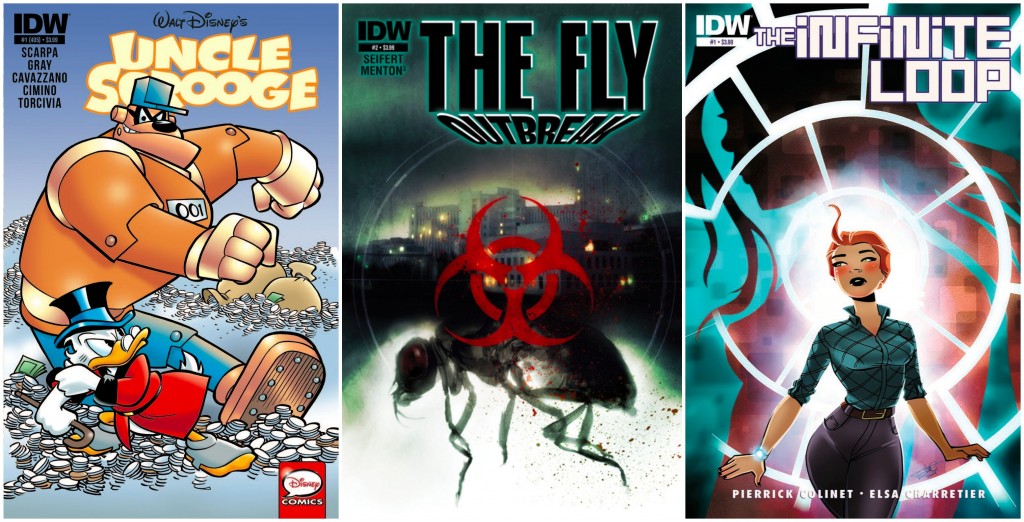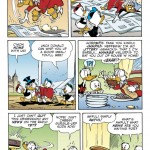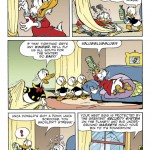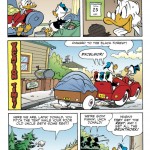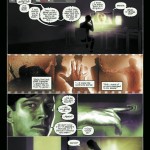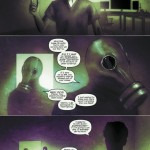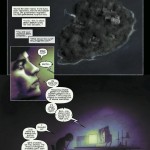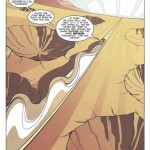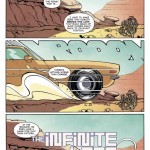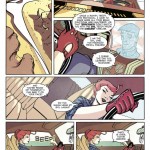It’s Wednesday and that means new comics. Let Deadshirt steer your wallet in the right direction with reviews (and preview pages) of titles out today from Image, Dark Horse, IDW, BOOM! Studios, Archie, MonkeyBrain, Oni, Fantagraphics, Top Shelf, Action Lab, and more!
Uncle Scrooge #1
Written by Rodolfo Cimino, Alberto Savini, Romano Scarpa, and Luca Boschi, with translations by Jonathan H. Gray, David Gerstein, and Joe Torcivia
Art by Romano Scarpa, Andrea Freccero, Giorgio Cavazzano, and Sandro Del Conte
Colored by Digikore Studios, Disney Italia and David Gerstein
Lettered by Tom B. Long
IDW
$3.99
Italian Disney comics are some of my favorite underrated stories. I’m always fascinated by how characters like Mickey Mouse and Donald Duck are interpreted differently in different parts of the world, and by the stories that creators choose to tell with them. The Scrooge, Donald, and Huey, Louie, and Dewey of the Italian comics are similar archetypes to the versions we’ve seen on DuckTales, but the attitudes and pacing of the stories subtly separate them until it’s clearly a different animal. Donald Duck, for example, doesn’t speak in his signature quack, but it goes deeper than that.
The stories here, about a giant robot the Beagle Boys built to steal Scrooge’s money, or a foreign tailor looking for a treasure map, could have broadly been any American comic or cartoon. But the ambling way they unfold is slow and lush, with plenty of jokes both native to the story and added by translators (there’s a reference to the anime G Gundam, of all things). This comes together to create a story almost more similar to a radio serial than a children’s cartoon. It’s very precise in its set-ups and punchlines, and while they’re idiosyncratic, like Scrooge slamming his head into walls with increasing force to shake loose a good idea, they’re worth the effort.
Artistically, the Italian comics tradition is in full force here, with vivid backdrops and cityscapes juxtaposed with standard character designs. Even with comparatively strict house style limitations, there’s an impressive amount of subtlety; Scarpa’s Scrooge is different than Freccero’s, and Cavazzano’s inks fall with a scratchier heft than Del Conte’s. The colors blend the classic artwork with modern, vibrant sensibilities, building a gorgeous package.
With nearly fifty pages of various stories, this issue is a great introduction to a lesser-known side of some familiar characters. It’s an interesting set of variations no less valid than the more mainstream cartoons (and certainly more valid than Quack Pack), and I’m grateful American audiences have a chance to experience them.
– Joe Stando
(Click thumbnails to enlarge)
The Fly: Outbreak #2
Written by Brandon Seifert
Art by menton3
Lettered by Tom B. Long
Edited by Denton J. Tipton
IDW
$3.99
The first couple of issues of The Fly: Outbreak…aren’t very good. IDW’s latest comic book miniseries, based on monolithic badass David Cronenberg’s 1986 cinematic remake of of 1958‘s The Fly, gets Witch Doctor writer Brandon Seifert together with Silent Hill artist menton3 and, complete with early issue variant covers by Lukas Ketner and Jason Edmiston, should really be making horror comic magic. But, even if the hype makes it worth looking at, it falls flat.
A contrived storyline, one that turns on the same mechanisms as the Resident Evil series, renders otherwise interesting characters as archetypes with no sense of sci-fi. (Sci-Fly? Can we do that? Sorry.) fun behind their existence, and the coloring is more dynamic than the art itself. The main action of the story unfolds years after a scientist Seth Brundle’s premature testing of his teleport machine morphs him into a parahuman fly. His son Martin (introduced in the Cronenberg-less The Fly II), who is significantly more man than fly, remains a genetic carrier for the mutation as he tries to find a cure for his father’s. However, as the title suggests, the testing leads to an outbreak of mutant material that threatens to cause a pandemic of aggressive human flies.
While this is an admittedly cool, if cliched, premise, the first issue chose to focus on Martin and his testy romantic relationship; the second issue allows the reader to explore a post-outbreak quarantine, but chooses to discuss sex more than advance the plot. A relatively interesting conversation towards the beginning of the issue provides useful exposition, for example, but almost immediately turns into the female participant’s attempt to fuck the protagonist. Though the issue ends on a cliffhanger, it’s difficult to ignore that the pages mostly consist of near-sex scenes. Any stakes within the story seem diluted by the personal melodrama occurring between characters, which seems like a particularly lazy way to introduce characterization and present exposition in a comic book. The presentation of the story here contrasts, at least in my mind (as someone who has seen Cronenberg’s The Fly), with much more terrifying storytelling and the visuals that accompany it. So far, there’s not even a gross-out factor in this new story, and I haven’t been remotely scared, or even particularly interested. As a result, I can’t help but feel like the comic book spin-off of one of the most difficult horror films in cinematic history is merely condescending to its readership.
– Caitlin Goldblatt
(Click thumbnails to enlarge)
The Infinite Loop #1
Written and lettered by Pierrick Colinet
Illustrated and colored by Elsa Charretier
IDW
$3.99
In the future, peace has been achieved by eliminating what seems to be at the root of so many conflicts throughout time: love. However, terrorists are trying to destroy the status quo by going back in time and altering the future. The Infinite Loop follows an agent whose job is to maintain the peace by traveling through the timeline and eliminating anomalies as fast as the terrorists can create them. Unfortunately for our hero, Teddy, she finds an anomaly that she can’t rectify, one that she may herself fall in love with.
The Infinite Loop is a cool sci-fi, romance comic. While this issue doesn’t delve too deeply into the romance part, spending most of its time setting up the world and Teddy’s occupation, it’s obvious that love and romance is at the book’s heart. While little info is given as to how this future society has eliminated love from their collective existence, the book wisely states that’s the way things are and moves on from there.
Elsa Charretier’s bright, animated art is perfect for the book. Her work is reminiscent of Darwyn Cooke’s, without being as trapped in the past as his work seems to be, which is funny, considering Teddy spends the entire book literally running through the past with only a few glimpses into the future.
There seems to be a new wave of romance comics of late, and The Infinite Loop is on the leading edge of it. Bright, fun and full of life; this is definitely a good book to lead the trend.
– Jason Urbanciz
(Click thumbnails to enlarge)
Be sure to let us know what you picked up this week in the comments below, on Twitter or on our Facebook Page!

